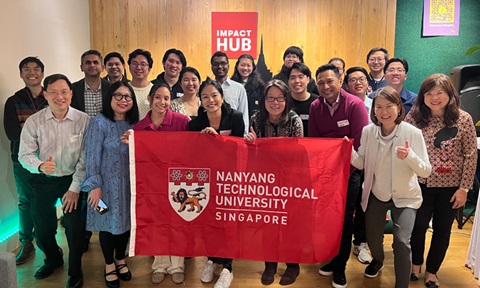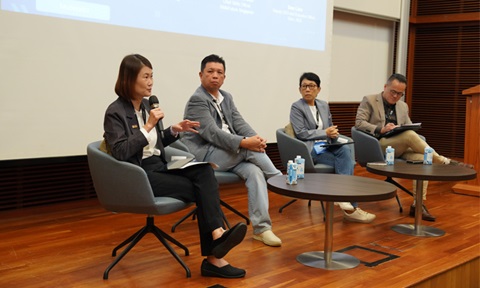App-solutely shaping the future of healthcare
Alumna Serene Cai (WKWSCI/2015) takes it upon herself to make a positive impact on people’s lives. This belief motivated her to start Speedoc, a digital health company at the forefront of revolutionising telemedicine and home healthcare services.
Text: Lester Hio
 Serene Cai
Serene Cai
Co-founder, Speedoc
WKWSCI/2015
Serene Cai, 30, was born to be a changemaker.
“I wanted to make a big impact on people’s lives, and I knew it was going to be either through education or healthcare. And it was healthcare that won when I met my co-founder Dr Shravan Verma," said Serene, one of this year's Nanyang Outstanding Young Alumni Award winners.
Together, they launched digital health service Speedoc in 2017, at a time when telemedicine was still a huge novelty.
Speedoc started out as a healthtech startup which served as an on-demand medical care service – drop a call using the Speedoc app, and a doctor would appear at your doorstep.
Over time, they added more services, including telemedicine, home visits by nurses, private ambulances, and virtual hospital ward care.
As a child of the ‘90s, Serene came to age alongside the millennial force which has irrevocably changed the lives of billions of people on Earth – the Internet. “I grew up reading the headlines of one tech development to another and lived through the rapid and vast changes brought about by tech,” said Serene. “And all these changes were created by people developing new technology.”
And Speedoc arose out of a perfect storm of consumers getting increasingly comfortable outsourcing their lives to their phones. Video calls had become old tech, and people were getting used to on-demand services via Grab and food delivery services.
She acknowledges that the pandemic accelerated the adoption and integration of digital health services into the public consciousness. It also showed that their approach to digital healthcare was paying off, and that such infrastructure can be scaled up to bring healthcare into remote areas where access to doctors might be hard to come by.
In early 2021, the platform was used to provide medical attention to patients in remote villages in India, which were badly hit by the Delta variant of the COVID-19 virus.
“We knew that India was in trouble. If our ethos is accessible medical attention, what can we do for India? Looking through our roster of doctors, we realised some of them were qualified to practise in India as well. We reached out to our ventilator partners and pharmacy partners, and asked – if we provide medical attention, are you able to help us with medical supplies?”
“This was really our first successful testbed of this idea that digital healthcare can transcend global boundaries,” said Serene.
Serene sees the future of digital health as tools that allow people to keep track of their own health.
Predictive analytics, where software can model a patient’s progress based on past data and flag up anything abnormal, is also a growing possibility. These are services that can already be offered, she said, but are currently limited by either cost or technological progress. But as technology continues to advance, digital healthcare can expand its offerings.
The rollout of 5G networks, for instance, will enable near-instant real-time remote monitoring which solves problems of lag and latency. “As tech gets more accessible, better, and cheaper, we can monitor people to a higher degree of accuracy. If we can map out a patient’s vitals in real time, we can raise red flags when we detect abnormal conditions. It’s easy to augment our clinical decisions – I won’t need a human looking at results all the time, I can get a software to alert the doctor when something is not right,” said Serene.
To this end, opportunities abound for the tech-savvy on the technical side of things – network, artificial intelligence, predictive analytics, and cybersecurity to keep patient records safe.
“Healthcare is a highly regulated sector, and for good reasons. Our key challenge then is how can we push the boundaries to provide even better patient care and perform our duty of care, while using technology to improve our services to patients,” said Serene.
Related stories:
This article first appeared in issue 2 of U, the NTU alumni magazine.







